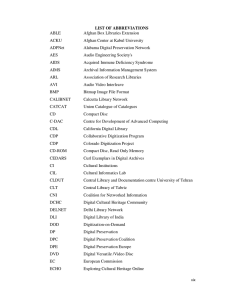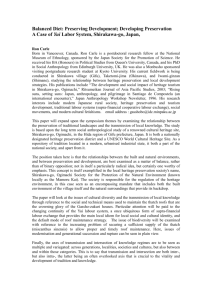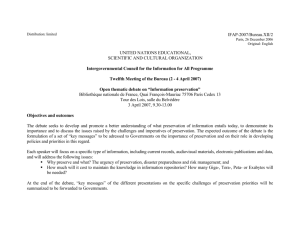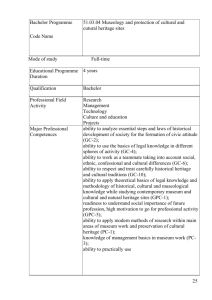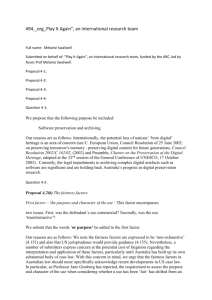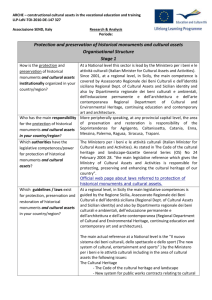Summing-up - What should be the roles and the
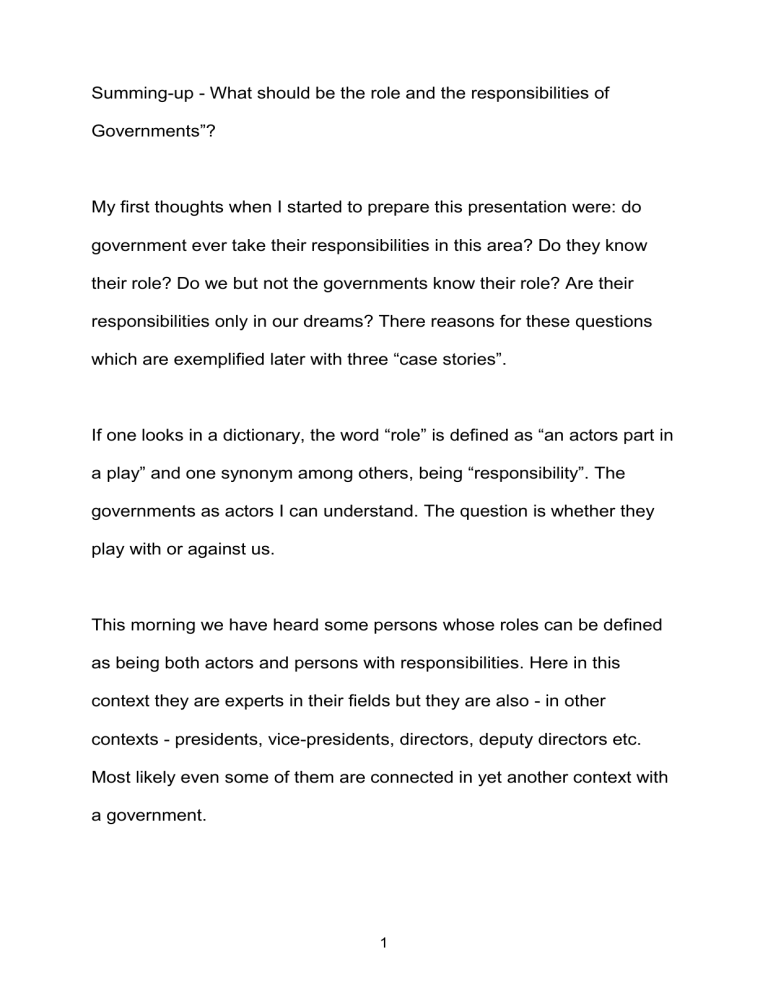
Summing-up - What should be the role and the responsibilities of
Governments”?
My first thoughts when I started to prepare this presentation were: do government ever take their responsibilities in this area? Do they know their role? Do we but not the governments know their role? Are their responsibilities only in our dreams? There reasons for these questions which are exemplified later with three “case stories”.
If one looks in a dictionary, the word “role” is defined as “an actors part in a play” and one synonym among others, being “responsibility”. The governments as actors I can understand. The question is whether they play with or against us.
This morning we have heard some persons whose roles can be defined as being both actors and persons with responsibilities. Here in this context they are experts in their fields but they are also - in other contexts - presidents, vice-presidents, directors, deputy directors etc.
Most likely even some of them are connected in yet another context with a government.
1
This morning we’ve heard about preservation issues concerning the cinematographic heritage, the scientific heritage and the audiovisual heritage, all relying on technology to be accessed. To preserve the integrity and authenticity of this heritage is a necessity. Somehow we have to fight the technological changes, which tend to come faster and faster. A lot of this material is dependent on digital technology to be preserved, which means a lot of money in an eternal, serious cost flow as long as we want to keep the information accessible. Thus the ultimate responsibility after all is on the politician’s desk.
The first version the title of this presentation I got included the word
“stakeholder”. I liked that. A stakeholder as explained in a dictionary is “a person with an interest or concern in something” or ”a type of organization or system in which all the members or participants are seen as having an interest in its success”. I think that is where we come in; cultural institutions, directors, staff, preservation experts, researchers, visitors and taxpayers. We are all stakeholders. Governments, governmental agencies, and ministers ought to be stakeholders but in my experience – I don’t know.
In Sweden the late government suddenly felt the need to support culture with €53 000 000. After decades of complaints from the cultural sector
2
about the need for more money to preserve the heritage, suddenly this huge amount came as a flood. The Minister of Culture of the time told the representatives from the cultural sect or in a radio debate: “You have always been complaining of the shortage of funding, why do you complain now when get them?” The money had to be used during a twoyear period, (This has now been cut with a couple of months.) and was intended to be used for preservation, conservation and access. The real reason was to employ unemployed academics. All this happened about nine months before national elections. As the amount of applications was huge it was decided to give most the money to digitisation projects, to make things accessible. No money at all has been set aside to keep the enormous amount of digital image information created during these almost two years, alive for the future – to be preserved.
The government played its role as “actor, part in a play” but the responsibilities were dictated by the political agenda.
This is of course the behaviour of politicians and I will refrain from dwell further on this. As I see it the role and responsibilities of governments is up to us. The closest thing to a commitment towards culture they have taken - as far as I know and then only in Europe - is to be found in Article
151 of the EC Treaty, which states “Cultural heritage as a vehicle of
3
cultural identity” and “cultural heritage as a factor in economic development”.
An environment where it is possible to talk and listen in all directions of the hierarchy is essential. Improvements in preservation have been achieved in this way and this is the way to get governments to take their role and responsibilities seriously. Until the 1970’s the world of preservation was as it always had been; the archivists, librarians or historians (in different disguises according to time and place) were in charge of the workshops. This was the place where objects were mended and restored. It was the traditional role of an educated person visà-vis a so-called “uneducated” craftsman. The educated knew what was important the keep. The craftsman knew what could be done. The educated decided. The roles were defined as well as where responsibility lay.
As workshops started to employ persons with university level education in conservation in the 1970’s and onwards, a situation arose where knowledge was acquired from different angles of interest, but from an equal level.
4
Preservers and researchers have started to co-operate. In order to get a government to work properly in our area it is necessary that we feed them with knowledge and solutions, the latter maybe the most important one. Another example from Sweden: In 1999 the Ministry of Culture got tired of listening to the moaning archive sector and demanded a assessment of preservation need to be carried out. Restrictions were set and “it should based on current knowledge and without new extensive assessment”. Thus the report was not based and solid statistics and could not be used in preservation activities. Assessment means were very subjective can be seen in the report as unnatural differences between archives. 14 000 linear meters of shelves were in need of conservation. The ministry of culture never commented with a word this report. It sunk to the bottom of the administrative swamp by its own weight. The report lacked anything like a plan of action, or some solutions,.
The third “case story” is from Denmark. A well-known politician went to study archives in Russia in the late l990’s. Some of the records he had asked for were not available since the paper was so brittle they could not be handled. He came back to Denmark and asked whether the National
Archives and the Royal Library knew this problem. Well, yes, since about
100 years. To make a long story short, the major Danish cultural
5
institutions has been given tens of millions Euros to be spent on preservation measures, over a ten-year period, as I recall it. This story has a good ending but I find the beginning frustrating.
Politician and researchers need to co-operate to define the goals. The preservers and politicians need to communicate so the politicians become aware of the problems and solutions.
Probably the most important communication though has to be between the researchers and the preservers in order to achieve optimal results for the cultural heritage within the given conditions. They need to combine knowledge of content with knowledge of technology. They need to discuss priorities both in the choice of where to direct actions and what means to use. Responsibilities have now been spread among all involved and the roles are based on knowledge and not on old traditions.
As I see it this emphasizes the importance of distributing knowledge all ways in the system. Today’s rolls and responsibilities are to make use the knowledge and to pass it on.
What is my conclusion then? We get the government we deserve. We are responsible for their roles and responsibilities. The role and
6
responsibilities of the Memory of World Programme/Sub-committee on
Technology as we see it is to produce information material aimed at the decision makers and politicians. The committee can be seen as a representative for the stakeholders.
7
